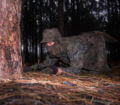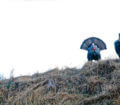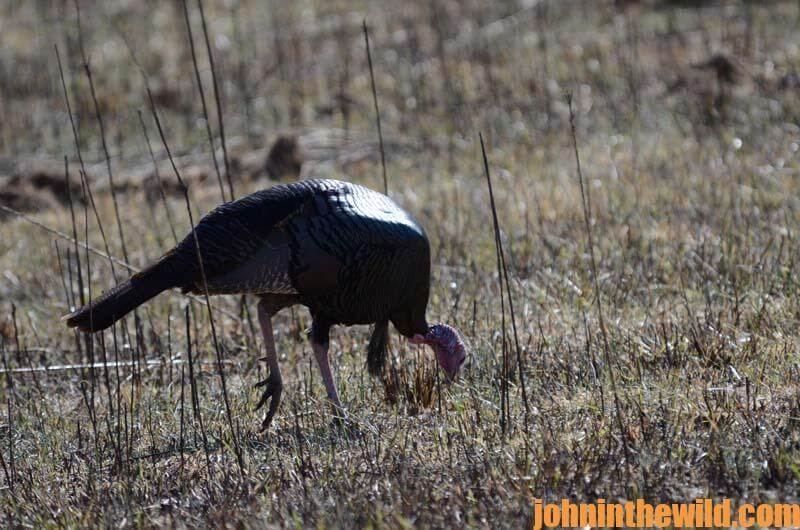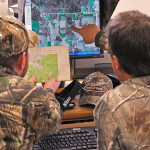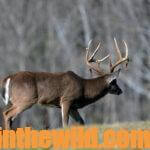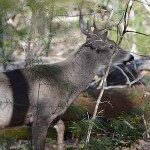Editor’s Note: David Hale of Cadiz, Kentucky, started his turkey-hunting career in 1966. He’s a co-founder of Knight & Hale Game Calls (http://www.knightandhale.com) and Commonwealth Productions and cohosts the “Ultimate Hunting” TV show (http://outdoorchannel.com/ultimate-hunting) on the Outdoor Channel.
 If I’m hunting on a piece of property I’ve never hunted before, especially in a swampy or an open timber area, I may put a decoy out in front of my stand site, slightly off to my right or left. I don’t want to ever be sitting behind a decoy, even if it’s a hen decoy. A decoy is a visual that may be misidentified by a hunter as a live hen or gobbler. I don’t want to be in the line of fire of someone trying to shoot my decoy. But I can put my decoy out into the field or swamp because when I call to a gobbler, and he’s coming to me, he expects to see a hen. If he doesn’t see that hen, he may hang-up or turn around and walk away from me.
If I’m hunting on a piece of property I’ve never hunted before, especially in a swampy or an open timber area, I may put a decoy out in front of my stand site, slightly off to my right or left. I don’t want to ever be sitting behind a decoy, even if it’s a hen decoy. A decoy is a visual that may be misidentified by a hunter as a live hen or gobbler. I don’t want to be in the line of fire of someone trying to shoot my decoy. But I can put my decoy out into the field or swamp because when I call to a gobbler, and he’s coming to me, he expects to see a hen. If he doesn’t see that hen, he may hang-up or turn around and walk away from me.
If I’m hunting in hill country, I won’t use a decoy at all. In hill country, I’ll take a stand on the opposite side of the hill from where the turkey’s gobbling. If the turkey comes straight to me, he’ll top that hill and start looking for that hen. He’s probably in gun range. If he comes to the left or right of me, he’ll walk across the top of that hill to look for that hen and let the hen see him. Either way I probably can take that turkey when I see him. Another reason I don’t use a decoy when I’m hunting turkeys in the hills is because most of the time I have to set-up quickly to get in position to shoot the gobbler just before he tops over the hill. I don’t want to be setting-up decoys when the gobbler tops the hill because he’ll see me.
I’ve used this tactic many times when hunting on public lands. To be real honest, I rarely use a decoy, except when I’m hunting field gobblers. If you find a turkey in a big field, and you need to get that bird closer to you to take the shot, having a decoy on the edge of the field can be deadly effective. I don’t think there’s any better set-up for a field gobbler than to have a strutting gobbler decoy with a submissive hen in front of him to draw that stubborn gobbler in the field to come to you. That decoying tactic is the best set-up I’ve ever used in my life to get a turkey to come to a decoy. When a gobbler comes into a field, and he sees a big strutting gobbler decoy with a white head, and a hen sitting on the ground (not on a stake) in front of that strutting gobbler, he thinks for sure that a gobbler’s trying to breed a hen on the edge of that field. Most gobblers just can’t stand to think that another gobbler is breeding one of his hens. He’s got to come to that strutting gobbler decoy.
 Even a 2-year old gobbler will come to that strutting gobbler decoy and walk around and around that decoy, pecking that decoy every now and then. A gobbler that’s 3-years old or older often will come running in to the decoy and begin flogging it with his wings and kicking it with his feet and his spurs. Now that’s a show worth watching! Jakes even will come in to look at that strutting gobbler decoy but rarely ever will attack the decoy. However, when three to five jakes are in a group, they’ll often attack the decoy. I’ve seen a group of jakes come out into a field where there’s a strutting gobbler, and all will come running to attack that gobbler – like a posse goes after a criminal. When a jake has his buddies with him, he becomes brave and will attack a strutting gobbler then. However, a single jake or maybe two jakes can’t seem to muster the courage to come fight a dominant gobbler. One or two jakes will walk around the decoy and often start purring, but they’re not going to jump on that big gobbler.
Even a 2-year old gobbler will come to that strutting gobbler decoy and walk around and around that decoy, pecking that decoy every now and then. A gobbler that’s 3-years old or older often will come running in to the decoy and begin flogging it with his wings and kicking it with his feet and his spurs. Now that’s a show worth watching! Jakes even will come in to look at that strutting gobbler decoy but rarely ever will attack the decoy. However, when three to five jakes are in a group, they’ll often attack the decoy. I’ve seen a group of jakes come out into a field where there’s a strutting gobbler, and all will come running to attack that gobbler – like a posse goes after a criminal. When a jake has his buddies with him, he becomes brave and will attack a strutting gobbler then. However, a single jake or maybe two jakes can’t seem to muster the courage to come fight a dominant gobbler. One or two jakes will walk around the decoy and often start purring, but they’re not going to jump on that big gobbler.
I’ve noticed that a dominant gobbler, especially one that’s following a hen, will have a white head, be dragging his wings in the strut position and have his tail up and spread. That’s the type of decoy I like to use when hunting a field gobbler. If I or the wind can make that tail fin move just a little, I think the decoy is much-more effective than a stationary decoy. Now before the invention of a strutting decoy, I’d use a jake decoy that generally would be effective in bringing in gobblers. But I’ve never seen a gobbler fight with a jake decoy like they will with a Pretty Boy strutting decoy. Something I’ve noticed about the strutting decoy is that sometimes when you’re trying to call in a 2-year old gobbler, he may come to that decoy, but he won’t fight it. Or, he may shy away from that decoy. If I’m hunting that same gobbler on another day, then I may use a jake decoy with a submissive hen decoy. Oftentimes a 2-year old will come to that type of set-up.
 I’ve also set-up hen decoys by themselves and seen gobblers shy away from just a single hen decoy. I don’t know why. The more-realistic a hen decoy is, the more likely a gobbler will be to come to that decoy. I’ve found that a mounted hen decoy will lure in a gobbler much faster than a plastic hen decoy will. I’ve discovered that the more-realistic the hen decoy looks, the better your odds will be to bag a gobbler. I’ve also learned that a full-bodied decoy seems to work better than a shell (one of those decoys you can fold up and put in the game bag of your turkey vest).
I’ve also set-up hen decoys by themselves and seen gobblers shy away from just a single hen decoy. I don’t know why. The more-realistic a hen decoy is, the more likely a gobbler will be to come to that decoy. I’ve found that a mounted hen decoy will lure in a gobbler much faster than a plastic hen decoy will. I’ve discovered that the more-realistic the hen decoy looks, the better your odds will be to bag a gobbler. I’ve also learned that a full-bodied decoy seems to work better than a shell (one of those decoys you can fold up and put in the game bag of your turkey vest).
To learn more about hunting turkeys, check out John E. Phillips’ eBooks and print and Audible books at https://johninthewild.com/books. You also can download a free Kindle app that enables you to read the book on your iPad, computer or SmartPhone.
For a free copy of John E. Phillips’ “The Turkey Gobbler Getter Manual,” go to https://johninthewild.com/free-books/ to download.

